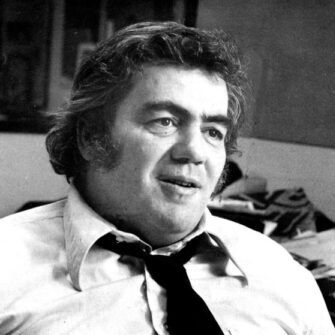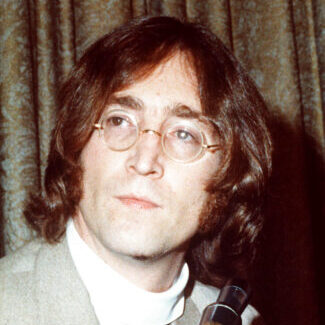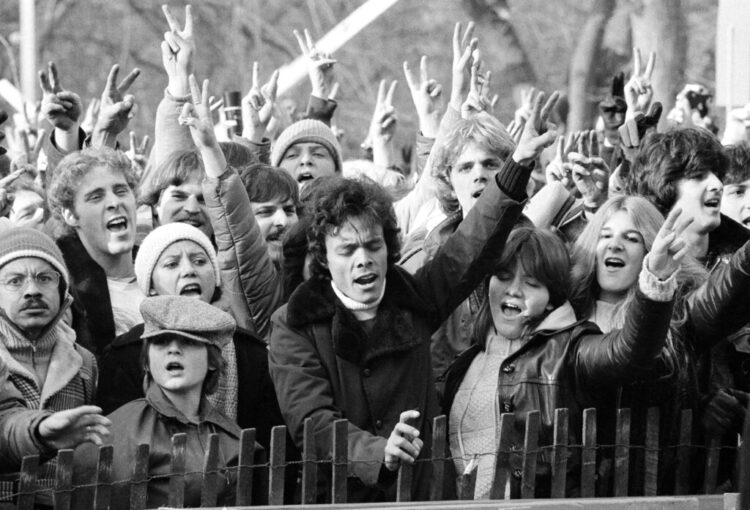EDITOR’S NOTE: In coming weeks, narrative journalist and teacher Lauren Kessler will identify and explore the key elements of nonfiction storytelling, including scene, character and endings.
There was something of a Camelot — a brief and shining moment — for long-form narrative journalism in newspapers. This “American Literary Movement” (thus proclaimed by the Encyclopedia Britannica) explored and blurred the boundaries between traditional news journalism and nonfiction storytelling, resulting in iconic pieces of reporting published most notably in the New York Herald Tribune and The Washington Post. Other daily newspapers — from the Portland Oregonian to the Detroit Free Press to the St. Petersburg Times to the St. Paul Pioneer Press to the Baltimore Sun — stepped in, giving reporters the time, resources and sophisticated editorial guidance to do this work. The pieces were often long, often part of a series and usually woven through with universal human experience or emotion.

It’s hard to find much evidence of this movement in today’s shrinking newspaper landscape. As newsrooms contract and news deserts grow, magazine-style journalism is again a luxury in daily journalism. Few newspapers still publish Sunday magazines, and many have folded their features sections.
Does this mean narrative journalism in newspapers dead? With fewer newspapers, smaller staffs and the press of a 24/7 reporting cycle, you would think the answer is yes.
The answer is no.
Or rather, the answer is that the vital elements, the key components, of narrative journalism can be (and are being) incorporated into news features, investigative journalism and even breaking news. And storytelling is alive and thriving in the podcast world.
Narrative on deadline
So-called traditional journalism and the art of nonfiction narrative are not mutually exclusive. The crafting of a piece of narrative journalism and the work of reporting on deadline are not mutually exclusive. When we read a lengthy piece in The New Yorker or The Atlantic (anchors of long form narrative), we know that the work demanded days, weeks, maybe months of time and an editor who will grant that kind of time. We might think all narrative is long form. That to do it right we need words, words and more words — thousands of words. We think there will be some magic moment in our careers where we will have that time and that editor and the heady freedom of those many words, not to mention the perfect story. In the meantime, narrative is for those who write for a handful of elite magazines. In the meantime, shoulder to the wheel and fingers to the keyboard.

Allow me to disabuse you of these assumptions. I just rediscovered a glorious example of narrative written on the fly with an economy of words. This piece testifies to the short-form, deadline possibilities of narrative journalism.
It is a column written by Jimmy Breslin after he got a call at his home on December 8, 1980, that John Lennon had been shot. Breslin went out to report it. He went back to the office, the New York Daily News, to write it. It was in print and on the streets the next the next day.
This event-to-published-story speed may seem glacial now. But for a moment, forget technology. Forget that today’s Breslin — you or I — could write in the field on a phone, take photos and record audio with the same phone, upload it all and have the story posted before the ambulance bearing Lennon’s fatally wounded body reached the ER.
So forget the technology. Think instead of Breslin’s speed of thought, how astute, insightful and perceptive he was. How, in the midst of breaking news, in the chaos of an unfolding event, he saw a story. Not a “John Lennon Shot” news flash but a story — one that no one else saw. He saw it in that moment. He reported it in that moment. He wrote in on deadline.
Building a story in scenes
Breslin’s piece has everything we look for in the narrative approach to journalism: scene-setting, character development, dialog, plot, arc and detail. It has heart, but not the bleeding kind. And it does all that in less than 700 words.
Related Posts
- Narrative as a sum of its parts
- Reporting and writing scenes
- Developing character
- Effective endings
Here’s how it opens:
That summer in Breezy Point, when he was 18 and out of Madison High in Brooklyn, there was the Beatles on the radio at the beach through the hot days and on the jukebox through the nights in the Sugar Bowl and Kennedys. He was young and he let his hair grow and there were girls and it was the important part of life. Last year, Tony Palma even went to see Beatlemania.
And now, last night, a 34-year-old man, he sat in a patrol car at 82nd St. and Columbus Ave. and the call came over the radio: “Man shot, 1 West 72 St..” Palma and his partner, Herb Frauenberger, rushed through the Manhattan streets to an address they knew as one of the most famous living places in the country, the Dakota apartments.
Here’s what we have so far: A snippet of culturally rich backstory. A hint of character development. A sprinkling of specifics. The inciting incident. The curtain-goes-up moment that introduces what promises to be a scene. And consider that quietly ominous end to the paragraph, a nod to the readers who, that morning, already knew what had happened the night before in front of the Dakota.
The story continues:
Another patrol car was at the scene, and as Palma got out he saw the officers had a man up against the building and were handcuffing him.
“Where’s the guy shot?” Palma said.
“In the back,” one of the cops said.
Palma went through the gates into the Dakota courtyard and up into the office, where a guy in a red shirt and jeans was on his face on the floor. Palma rolled the guy over. Blood was coming out of the mouth and covering the face. The chest was wet with blood. Palma took the arms and Frauenberger took the legs. They carried the guy out to the street.
Here’s what we have: A you-are-there scene with terse dialog, the drama of it delivered clinically. Anti-drama drama. The kind that chills you. “A guy in a red shirt.” The guy, that body — John Lennon, the focus of every other story written about that event — is in Breslin’s piece an object. Note that Breslin writes the mouth, the face, the legs — not his mouth, his face, his legs. The cops are the subject. This is their story.
The scene continues to unfold. There’s another patrol car in front of the Dakota, another cop. His name is Jim Moran, and the first thing we learn about him is that back when he joined the force in 1964 he was put on patrol guarding the Beatles at their hotel. The guy in the red shirt covered in blood? His body is put in the back of Moran’s car. Breslin writes:
“As Moran started driving away, he heard people in the street shouting, “That’s John Lennon!”
Moran looked in the backseat and said, “Are you John Lennon?” The guy in
the back nodded and groaned.”
It reads like a short story, a polished gem of a short story. The brilliance of the piece — on deadline, remember, in the midst of a media circus, remember — is that Breslin saw the event through a storytelling lens, not a breaking news lens. He employed classic reporting skills — observation and interviewing — but in the service of story. And so what he noticed, whom he paid attention to, what he asked, what he wrote down, was different than what the news hound was doing. Story was the beginning of the process. Story framed the process.
Story was the beginning of the process. Story framed the process.
Breslin had already made a name for himself as a street reporter interested in “the little guy,” the ordinary citizens of the city; he won the 1986 Pulitzer Prize in commentary for a collection of such stories. The story he saw in front of the Dakota that night in 1980 was not about the famous man who had been shot but about the cops on the scene who picked up the bleeding body, and the cops who transported that body to the hospital.
Narrative as elements and process
Breslin’s brilliance was also his simultaneously muscular and graceful practicing of the key elements of storytelling. The guy knew how to write a scene. He knew what to look for. He knew what to include and what to leave out. He knew how to pace it. He knew how and where to insert exposition. In the craft-centered essays that will follow this one in coming weeks, I’ll focus on the essential elements of narrative journalism that Breslin and others have mastered. I’ll begin with scene-setting, the heart of the enterprise, and then move on to character development, structure/plot/movement, dialog and conversation (and even, gasp, internal monolog), and finally endings.
…forget the technology. Think instead of Breslin’s speed of thought, how astute, insightful and perceptive he was.
Breslin’s piece is a showcase for all this. It is also a reminder that narrative work begins with the concept. Narrative is a lens first, an approach to reporting second, and only then a series of (very important) writing decisions. His column is also an argument in favor of the practice of “everyday” narrative journalism: shorter pieces, even deadline pieces, not waiting for the BIG story, the multi-parter, the one that takes weeks to produce.
I want to leave you with the final scene in Breslin’s column because it is that good.
Palma walked into the emergency room. Moran was there already. The doctors had John Lennon on a table in a trauma room, working on the chest, inserting tubes.
Tony Palma said to himself, I don’t think so. Moran shook his head. He thought about his two kids, who know every one of the Beatles’ big tunes. And Jim Moran and Tony Palma, older now, cops in a world with no fun, stood in the emergency room as John Lennon, whose music they knew, whose music was known everywhere on earth, became another person who died after being shot with a gun on the streets of New York.
* * *
Lauren Kessler is an Oregon-based narrative journalist, teacher and author of 15 books.



